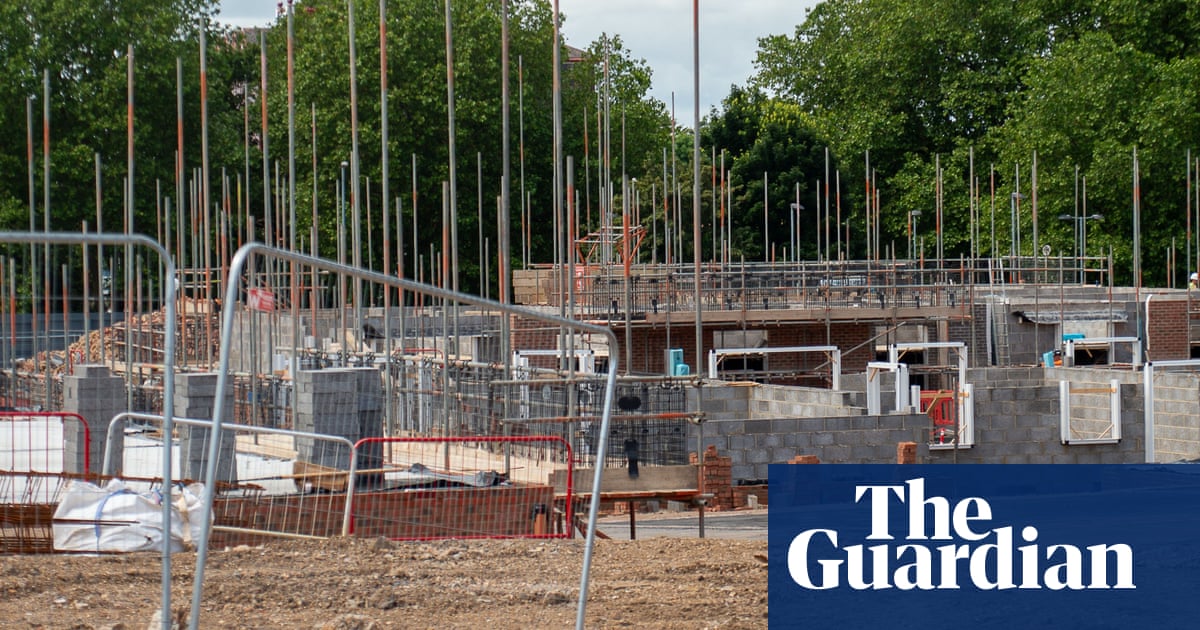There is very little evidence that protections for nature are a blocker to development, the government has admitted in its own impact assessment of the controversial new planning and infrastructure bill.
The analysis by Whitehall officials provides no data or research to back up the government’s central argument that it is environmental legislation that holds up building.
Ministers say the new bill will speed up housing developments and large infrastructure projects by allowing developers to avoid meeting environmental obligations to protect habitats and species such as barn owls, otters, bats and newts, at the site of their project, by paying into a central nature recovery fund (NRF) which will be used to create environmental improvement elsewhere.
Officials admit this nature improvement could be in a different county to the place where the building is taking place, raising fears it will reduce access to nature.
The NRF, which is in part three of the bill, has been criticisedby leading economists, ecologists and former government advisers as a “licence to kill nature” with no evidencethat it would boost the economy. They want part three of the bill withdrawn for further consultation.
The Office for Environmental Protection watchdoghas published a legal opinion which states the new bill in its current draft would remove safeguardsfor nature and put protected sites at risk.
Now the central reason given by the government for the new legislation, that nature is a blocker to development – promoted by prime minister Keir Starmer, chancellor Rachel Reeves and housing secretary Angela Rayner – has been undermined by thegovernment’s own impact assessment.
Officials attempted to examine the impact of one environmental obligation – nutrient neutrality – on building delays, but officials said: “There is very limited data on how environmental obligations affect development.
“This makes reaching a robust estimate of the impacts associated with the NRF, which will streamline the process for discharging environmental obligations, very challenging.”
They have not analysed other environmental obligations, including the requirement to protect sites of special scientific interest (SSSI), not to harm threatened species such as bats or barn owls, and to adhere to water neutrality rules to ensure the development does not overwhelm water demand in an area, because there is a “lack of data” on the impact of any of these obligations on housing delays.
Robert Oates, CEO and founder of the ecological consultancy Arbtech, said: “The government’s impact assessment on the planning and infrastructure bill lays bare a truth many of us in the industry have suspected for some time: they have no idea how this bill will affect vulnerable species like barn owls and otters.
“By its own frank admission, the government has ‘very limited’ data on how environmental obligations impact planning, and has based its assumptions solely on nutrient neutrality.”
He said despite the lack of any evidence, entire species now risked being sacrificed under the false premise that nature blocks development. “Time and again, the government has failed to produce any evidence to support this claim,” he added.
Sign up toDown to Earth
The planet's most important stories. Get all the week's environment news - the good, the bad and the essential
after newsletter promotion
The impact assessment also states that the solutions for nature and development which the government says the bill provides are already possible within the current system without the need for new legislation.
Officials list as a risk factor the ability of Natural England, the government’s wildlife watchdog, to run the nature recovery fund and to create the environmental projects in time to allow developers to avoid specific legislation to protect wildlife and habitats at each of their individual project sites.
“Instead of speeding up housebuilding, the government is paving the way for ecological destruction while creating a new planning bottleneck – this time within Natural England,” said Oates.
Becky Pullinger, head of land use planning at theWildlifeTrusts, said: “After weeks of ministers refusing to engage with the strong evidence that current environmental protections don’t delay development, the UK government’s own impact assessment has confirmed that there is ‘very limited data’ to back up their argument that nature is a blocker.
“It’s time for ministers to follow the evidence and amend the planning and infrastructure bill before it devastates nature in the name of a false diagnosis. We can protect nature and build homes, but not through the current bill.”
The admission in the impact assessment comes as the chair of the environmental audit committee (EAC), Toby Perkins, said the government risked failing to meet its pledge to protect 30% of land by 2030 and offer communities greater access to nature.
The EAC, in a report published on Wednesday, said the push for developers to pay into an NRF was fuelling speculation ministers may be wavering on their commitment to biodiversity net gain, which drives investment into nature by encouraging developers to provide a minimum increase in biodiversity of 10%, whether this is done on the development site, delivered somewhere else, or by buying “credits” from the government as compensation.
